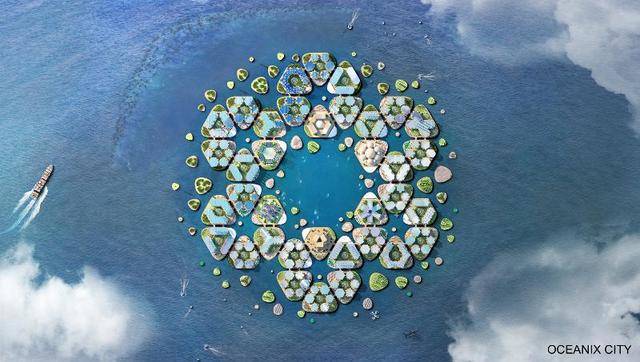Floating cities seems straight out of a sci-fi movie but these cities could be the housing destination in the near future. A group of builders, engineers, and architects introduced the concept of building floating cities at the United Nations roundtable on Wednesday.
The United Nations seemed very much in line with the seemingly futuristic project. The idea behind the proposed innovation is to provide housing solutions to a world where the population is rapidly increasing and the sea levels are also growing at an alarming rate due to global warming.
40% of the world’s population resides near coastal areas and islands which are threatened to get submerged in the foreseeable future due to global warming. Climate change is also likely to impact the frequency of extreme floods and storms. So, it’s of utmost importance to protect people living in these areas and provide them with affordable living space.
Hence, the floating city project provides a sustainable solution, Oceanix City. Oceanix is a company aimed at building the offshore urban infrastructure that can combat the problem of rising seas and natural disasters. Together with the architect Bjarke Ingels and sustainability experts and engineers, Oceanix unveiled plans for building a hexagonal field of floating islands.
The hexagonal shape is the most efficient architectural shapes like the beehive. Building the city in the shape of a hexagon would require fewer materials, according to the builders.
The city would consist of six group of “village” islands and would contain around 100,000 residents in total. Each island will have some dedicated communal use–like healthcare, education, spirituality, exercise, culture, and shopping.

Outside the floating city, there would be small uninhabited islands with dedicated purposes, like to collect energy from the sun or to grow food. These would also double as a buffer against waves and wind.
The city would be moored to the ocean floor and can be towed to safer locations in case of emergency or any potential disaster.
The city would be fully autonomous and produce its own power, heat, and freshwater. The city would not contain any garbage trucks. Instead, pneumatic trash tubes would transport garbage to a sorting station, where it could be identified and repurposed.
No cars would be allowed in the floating city but driverless vehicles and drone deliveries can be incorporated in the design.
The food would be produced using ocean farming and seaweed farming. Cages underneath the city could harvest seafood. Waste from fish can be harvested and used for fertilizing plants using aquaponic systems in vertical farms.
The platforms would be bolstered by Biorock, a material created by exposing underwater minerals to an electric current. This leads to the formation of a floatable limestone coating that’s three times harder than concrete and will get stronger with age and can even repair itself from the current. This allows it to withstand harsh weather conditions.
The idea might seem magical, but it is not new. There are plenty of floating structures around the world now. The Netherlands has a prototype floating dairy farm in Rotterdam. But the existing floating structures are built for a small mass. Building a whole floating city on a massive scale would require enormous planning. And it will be expensive!
The challenges sure seem big. But with advanced technology and architectural accuracy, it is certainly doable or at least worth a shot.